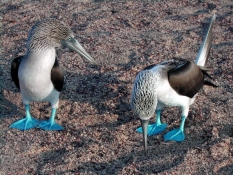LESSON PLAN BASICS
BY
by Dr. Brian Murfin
- First
consult the "THREE C'S" i.e., CULTURE , CURRICULUM , and CONCEPTS .
Learn about your students' culture, hobbies, and lifestyles. This
information will give you possible ways of making your science lessons
more relevant and interesting. Consult the syllabus, for example, the
Regents Living Environment syllabus. This will give you an idea of the
breadth of the discipline you are supposed to cover. You should also
check the National Science Education Standards, the NYC and State
Curriculum Frameworks and Standards, and commonly used textbooks. Most
importantly, consult with experienced teachers and look at past
examinations to get an idea of the depth you are expected to cover on
specific topics.
- Include a science
background section which contains general information on the topic for
the teacher's use. With regard to the depth of this science background
material, assume that your lesson or unit plan might be used by a
substitute teacher who did not have any prior knowledge or experience
in this area of science.
- Write down
the topic, grade level, and date. Keep all your lesson plans in a
binder. Next year when you are teaching the same topic you will be able
to check if you are behind or ahead of schedule.
- Once
you have chosen a topic, write out instructional objectives which
specify what the students should be able to do or what they should know
after they complete the lesson.
- After
you think of the activity or activities you would like to you will need
to specify the materials you will need. List the quantities of all
materials and where they can be obtained. Remember, a substitute
teacher should be able to come in and teach your lesson using your
lesson plan. Also specify any books, software, etc. that might be
necessary.
- Now you should write out a step by step procedure which includes approximate times for each step.
- Your
very first act during the lesson should be to gain the students'
attention and to motivate them to learn . This is where prior knowledge
of the students' cultures, lifestyles, etc. can help. Another way to
motivate students is to provide information on prospective careers
related to the day's topic. Discrepant events are also a very powerful
tool. Finally, the best learning takes place when play is blended with
work . The students can and should have fun while they are learning
science.
- After you have gained the
student's attention you need to ascertain the concepts the students
hold on the topic in question. This can be done through discussion,
careful questioning, surveys, concept maps, etc. A very effective
technique for beginning a lesson is to use an advance organizer . An
advance organizer provides the students with ideational scaffolding,
i.e., a cognitive structure, within which new concepts can be
integrated and incorporated through a process of assimilation. An
example of an advance organizer would be an overview of the topic, with
broad overarching principles described.
- Now
the procedure for the activity can be described. Any hand-outs, books,
materials, etc. should be included with the lesson plan.
- Questioning is a very important part of science. Include discussion questions and possible answers in your lesson plan.
- Finally,
you should have closure for the lesson. Tie up loose ends, summarize,
ask stimulating open-ended questions, have students attempt to apply
the concepts they've learned to new, novel situations and problems.
- Always
overplan! Make sure to have contingency plans for finishing early or
running out of time. Have some short, quick activities that students
could do if they finish early. Be prepared to end the lesson before you
have finished the activity.
- Evaluate the lesson . What went well, and what could be improved next time?
|
